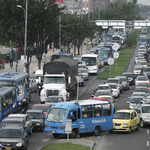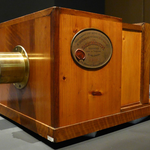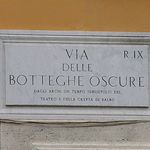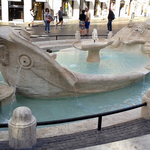Aventino
The Aventino Hill, which is 40 meters on the sea level remained almost uninhabited and outside the perimeter of cinta sacra) The plebeians in struggle with the patricians ones made continuosly the secession here. Caio Gracco searched in vain here the refuge against the noble bands.
During the empire magnificent temples rose up there and it became an aristocratic quarter. Since being devasted by the Alaric Goths in 410, it has remained little inhabited as well as Celiountil now.
The hill is divided in two elevations:the one on the North,which is the true ancient Aventino, where are the churches of Sant' Anselmo, Sant' Alessio, Santa Sabina, Santa Prisca and the other one on the south so-called piccolo Aventino, with the churches of San Saba and Santa Balbina.
The main appoach is from the Viale of Aventino (antico clivus piscinae publicae),which crosses the saddleback between the two tops and joins the Testaccio to the Porta Capena square.
On the slope of the hill in the Santa Sabina Convent excavations directed by Domenicani in 1855 and 1936 have put to the light a stroke of the republican boundry wall together with some buildings
of Sillan epoch laid inside and other buildings outside of Augustan epoch which were reduced later to the Thermal baths.
The magnificent Laterizie walls beneath the Malta Knights villa and the medieval San Lazzaro Arch in the Via della Marmorata in front of the Piazza dell' Emporium belong to Horrea,warehouses of the river harbour.
The main gate of Complesso dell'Ordine dei Cavalieri(the Malta Knights Order Complex) surrounded by the Walls has a particular lock: to look it better one can make out the Cupola of
Basilica di San Pietro.
In the point where the Viale dell' Aventino widens out into the Piazza Albania, an important gate of the so-called Servian wall named Raudusculana existed. The walls were forming a recess here:
according to the more credible hypothesis two strokes still recognizable belong to the period of the Annibaliche wars.
The Via di Porta Lavernale that gets down to the Via Marmorata passes along the magnificent rampart of Paolo III, in the point where Porta Lavernalis dated to the republican age existed. Beneath the hamlet, almost of the Maccarani-Torlonia vineyard on the Piazza del Tempio di Diana (there are interesting medieval remains in the hamlet), the ruins of the Decian baths built in the 242 by the emperor Decio can be seen. Beneath Sant' Anselmo the ruins of the so-called Trayan house can be found. And even beneath San Saba more Roman houses have been identified.

 The records of Rome. Big numbers, not always enviable, for a big city.
The records of Rome. Big numbers, not always enviable, for a big city. New Phot-O-Matic section. To spend some time looking at photos (also) of Rome.
New Phot-O-Matic section. To spend some time looking at photos (also) of Rome. The administrative, urban, toponymic and imaginative subdivisions of Rome.
The administrative, urban, toponymic and imaginative subdivisions of Rome. Notice for tourists: in Rome you drink for free. Historical fountains and 'big noses'.
Notice for tourists: in Rome you drink for free. Historical fountains and 'big noses'. Free museums return on the first Sunday of the month.
Free museums return on the first Sunday of the month.